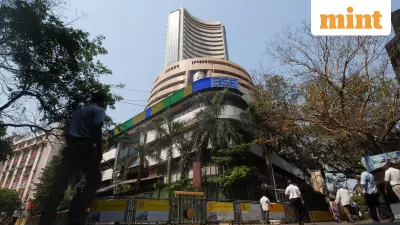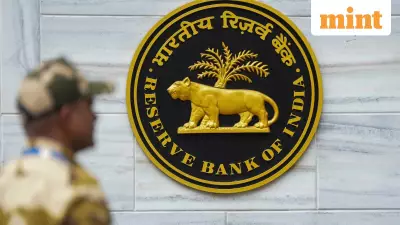
In a landmark corporate event that fulfills a vision first articulated 27 years ago, Tata Motors has successfully completed the demerger of its passenger vehicle and commercial vehicle businesses. The commercial vehicles unit, now operating as Tata Motors Ltd, began trading on Indian stock exchanges on Wednesday, marking the final step in separating the two distinct automotive operations.
The Historic Listing and Market Response
The newly listed commercial vehicles business made a strong market debut, with shares opening at ₹335 each, representing a 28% premium to the discovered price. Meanwhile, the passenger vehicles business, which had begun trading separately on October 14, initially opened in positive territory before settling at ₹404.55, showing a minor decline of 0.75% from the previous close.
The combined market capitalization of both entities now stands at approximately ₹2.7 trillion, marking a significant 12.5% increase from the pre-demerger valuation of ₹2.4 trillion recorded on October 13. This value unlocking demonstrates investor confidence in the strategic separation.
Ratan Tata's Foresight Comes to Fruition
The demerger represents the realization of a vision first expressed by the late Ratan Tata back in 1998. In an interview with Time magazine when he was 60 years old, the former Tata Group chairman had predicted: "What may well happen in the future is we may split the company into two business units." This statement came shortly after Tata Motors, then known as Telco, had made its ambitious $400 million investment in developing the Tata Indica.
Tata Sons and Tata Motors Chairman N Chandrasekaran acknowledged the significance of this moment, stating that the separation process required several years of careful planning and execution. "It was clear to me 8-9 years ago that these companies need to have different paths," Chandrasekaran revealed during the listing ceremony at BSE's iconic trading floor in South Mumbai. "And they have the right to pursue different ambitions."
Strategic Rationale and Business Focus
The demerger creates two focused automotive entities with distinct operational priorities and growth trajectories. The commercial vehicles business, which retains the Tata Motors name, includes the recently acquired Iveco business and will concentrate on improving profitability through scale, electrification, and exploring R&D synergies.
Chandrasekaran emphasized that the commercial vehicles business had always been profitable, with its cash flows historically funding investments in the passenger vehicles segment. He noted that the financial metrics of Tata Motors Ltd will be superior, enabling smarter returns on capital invested and facilitating bold strategic moves like the Iveco acquisition.
The passenger vehicle business, operating as Tata Motors Passenger Vehicles Ltd, now houses the car business including the British luxury unit Jaguar Land Rover. This segment accounted for over 82% of Tata Motors' ₹4.4 trillion revenue in financial year 2025, while the commercial vehicle unit contributed approximately 18% at ₹75,055 crore.
Future Outlook and Challenges
Both businesses now face distinct challenges and opportunities. The commercial vehicles business, led by Girish Wagh, must navigate a stagnant domestic market while integrating the newly acquired Iveco business, for which Tata Motors paid $4.4 billion in July. The acquisition is expected to be completed by April 2026, pending regulatory approvals.
Analysts from SBI Securities project that the commercial vehicles stock is likely to trade between ₹320-470 post-listing, with industry recovery expected in the second half of FY26 driven by GST rate reduction on CVs from 28% to 18%, replacement demand, and improved activity in infrastructure, construction, and logistics sectors.
The combined Tata Motors-Iveco entity is projected to sell over 540,000 units annually and generate more than $25 billion in revenue once integration is complete. Meanwhile, the passenger vehicle business under Shailesh Chandra will focus on premiumization, technology collaborations, and strengthening global brand presence, particularly for Jaguar Land Rover.
This strategic demerger not only honors Ratan Tata's original vision but positions both automotive businesses for sharper focus and accelerated growth in their respective market segments, creating what Chandrasekaran described as "two strong and independent auto companies" capable of pursuing their unique ambitions in the rapidly evolving automotive landscape.





